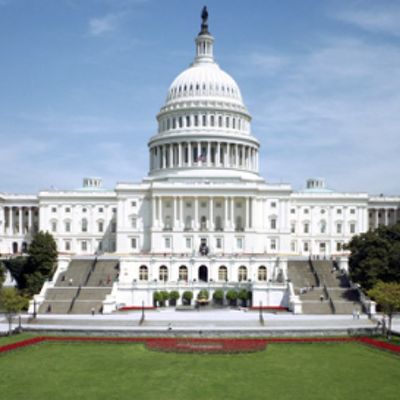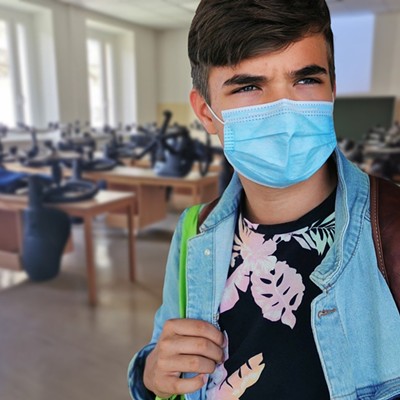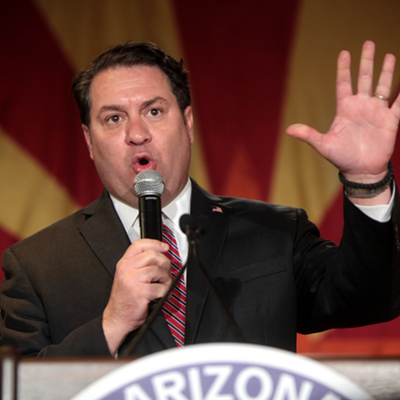CATCH AND RELEASE
You can count Congressman Raúl Grijalva among those unhappy about the decision by Customs and Immigration Enforcement officials to release thousands of undocumented immigrants from detention centers around the country.
Grijalva told The Skinny that he feared the release will "convolute this whole conversation about immigration reform."
Last week, we read headlines that an estimated 2,000 undocumented immigrants were released before the sequester cuts arrived on March 1. ICE officials said they were releasing non-violent immigrants who were likely to show up for their court hearings.
Gillian M. Christensen, a spokeswoman for Immigration and Customs Enforcement, told the press: "In order to make the best use of our limited detention resources in the current fiscal climate and to manage our detention population under current congressionally mandated levels, ICE has directed field offices to review the detained population to ensure it is in line with available funding."
Homeland Security Secretary Janet Napolitano later said the releases were made at the local level and without her knowledge.
Grijalva said the decision to release the immigrants was "unnecessary. It didn't fit into the overall plan that the Homeland department was going to do. They were supposed to concentrate on furloughing employees and other reductions such as purchases for the future. The release of prisoners was not an agenda item in that area."
Republicans around the country complained loudly about the releases. Gov. Jan Brewer told Fox News that "I personally believe it could be payback. It could be to punish Arizona, to make them squirm. They're pushing back on what we're pushing on because we want our border secure and we're strong about it."
While he's not happy about the release of the prisoners, Grijalva wasn't buying into Brewer's spin, either.
I don't think it's a payback to Arizona," Grijalva said. "The governor and her allies who don't want immigration reform should be thanking ICE for convoluting the issue rather than trying to blame the administration for trying to pay her back."
LIFE SUPPORT
One of the biggest battles at the Arizona Legislature is over Gov. Jan Brewer's call for the state to expand the Medicaid rolls to 133 percent of the federal poverty level.
The push to put more people on the Arizona Health Care Cost Containment System (AHCCCS) is splitting the Arizona GOP. The anti-tax, anti-government grassroots, in the form of county and legislative district leaders, are trying to kill the expansion because they see it as an expansion of government in general and Obamacare in particular.
The Pima County GOP passed a resolution calling Brewer's plan part of a "socialist takeover of our health care system and insurance industry. ... Do not sell out our Republican principles and our birthright of Liberty for a bowl of lentils and the promise of three years funding that will benefit a few special interests at the cost of our state sovereignty and our core Republican values."
On the other side, you have the business wing of the party, represented by the Arizona Chamber of Commerce and Industry, which has been among the leaders in the push for the expansion. A group backed by the chamber,
Restoring Arizona, is backing a political group that started airing a 30-second TV ad urging Arizonans to support Brewer's proposal.
The ad's narrator notes that "Gov. Brewer's conservative plan will keep our state's budget balanced while providing quality health care to Arizona's citizens so we can focus our budget on what matters most, like education, public safety and growing our economy."
The Grand Canyon Institute recently released a report that concluded that continuing with the current level of AHCCCS coverage, it would cost the state $856 million between fiscal year 2014 and fiscal year 2017. In return, the state would receive about nearly $2.8 billion in federal dollars. If the state went forward with the expansion, it would cost the state about $1.5 billion—but in return, the state would receive nearly $8 billion in federal dollars.
Both sides are doing their best to sway Republicans at the Legislature, who are crucial to passing the expansion.
At this point, there's no legislation to enact Brewer's plan. Various background sources have suggested that it may come in the form of strike-all legislation that will amend a bill that is already moving through the Legislature.
One of the key areas of disagreement remains whether the expansion—which will be funded by a "voluntary assessment" on hospitals—requires a two-thirds vote of lawmakers because it could be considered a tax increase. That's important because it's a lot harder to get enough Republicans to join Democrats—who are on board with the expansion—to reach that two-thirds threshold.
Team Brewer is floating the idea that if lawmakers give AHCCCS the power to enact the voluntary assessment, it would not really be a tax hike. That's one for the lawyers to sort out, but it sounds like shaky legal reasoning to The Skinny.
You can see both sides making their arguments at a town hall from 6:30 to 8:30 p.m. this Thursday, March 7, at The Loft Cinema, 3233 E. Speedway.
Among those scheduled to appear: State Sen. Steve Farley (D-Tucson), State Rep. Ethan Orr (R-Tucson), Americans for Prosperity Arizona Director Tom Jenney, former state lawmaker Frank Antenori and others.
A NEW FOCUS?
Thank God almighty, the Center for Creative Photography is free, free at last, from the onerous rule of the dean of libraries at the University of Arizona.
The Center's Emancipation Proclamation was penned last Friday, when brand new provost Andrew Comrie wrote in an email that "we have decided to shift the formal reporting structure of the Center for Creative Photography to the Vice President for Research."
Comrie's words were the answer to the longtime prayers of the hardworking staff at the Center and to photography fans in Tucson and around the country. Now, grouped not with the library but with the other museums on campus, the Center has a shot at again becoming the vital, exhilarating museum it once was.
A dozen years ago, the Center's photography professionals lost a bruising battle to free themselves from the tight control of Carla Stoffle, the controversial dean who recently announced her retirement. The Center had always been conceived of as a unique museum-archive-library, but librarian Stoffle "didn't want us to be a museum at all," one staffer recently lamented.
In the years since Stoffle won the tug-of-war with staff, the museum has languished pitifully. Directors and curators have come and gone in rapid succession, too often leaving the place leaderless. The Center has a director at the moment, but its most recent search for a full-time curator ended in failure.
Its once vigorous exhibition schedule has dwindled into just a few shows a year. The exhibitions used to be an exhilarating mix of works from the Center's world-class collection of 20th century photographers and new work by living artists. Of late it's come dangerously close to an all-Ansel, all-the-time format, with shows more or less limited to the work of Ansel Adams and other eminences drawn from the archive. And despite Stoffle's librarian cred, under her watch the Center's excellent library's materials were reshelved elsewhere on campus.
Kudos to Comrie for taking quick action so early in his term to right a long-ago wrong. And here's hoping it's not too late for the Center for Creative Photography to resurrect its former greatness.
















